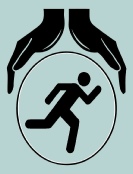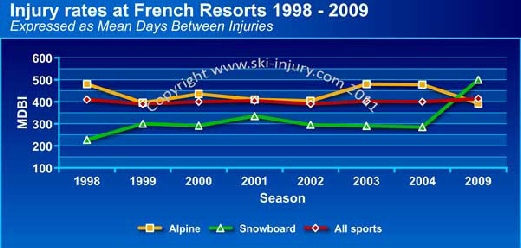
© Ennis Physiotherapy Clinic, 3A Barrack Close, Barrack Street, Ennis, Co. Clare V95 X437 Tel: (065) 6840757
Spinal Problems Neck + Back Pain Disc Injury Whiplash Posture
Lower Limb Injuries Walking + Running Ligament Injury Snowsports Injury Home Exs Prog
Upper Limb Injuries Ligament Sprains Tendon+Muscle Golf + Bike Set Up Useful Links




065 6840757

Mon - Fri 9.30am - 8.30pm


3a Barrack Close, Barrack St., Ennis, Co. Clare V95 X437
www.ski-injury.com is a good website with evidence based information
http://www.skiclub.co.uk has a huge amount of useful information information relating to all aspects of snowsports
http://www.skiclub.ie is the link to the Ski Club of Ireland
The following links provide a nice variety of exercise options on video too. They include some promotional stuff at the start and finish but the exercises themselves are nice and varied. Click here for a video featuring a stretching programme and click here to see a functional strengthening exercise video.
The first video shows a snowboarder losing control and colliding with a standing skier and breaking his leg
The second video has an out of control beginner in a high speed snowplough taking out another skier
The third video shows a boarder breaking a collar bone after a bad landing while jumping
The fourth video shows a heavy fall with potential for a spine injury
Ski and Snowboarding Injury Snowsport Injury Prevention
Risk of Injury Mechanics of injury Videos
Snowboard Injuries Useful web links

Winter snowsports are increasingly popular. It is great fun but is very physically demanding. When injuries occur they can be significant. Improvements in equipment have improved safety - ski boots and bindings (fitting and adjustments), helmet use etc. The clothing and joint supports (wrist braces, back supports) for boarders has greatly improved protection than was previously available.
Injury rates are relatively low compared to other sports – approximately 2 per 1000 people on the slopes in a day will be injured – but the severity of injuries can be very significant.
There is an increased risk of injury associated with
- Being under 16 years old (high level of leg fracture, possibly due to poor settings on bindings)
- Having less than 5 days experience that season
- First and last day's experience
- Females’ knee injury rate is twice that of males
- Poor general fitness / poor core stability / poor technical ability
- Skill Level / Control / Technique / Speed / Jumping /
- Use of terrain Parks – jumping and tricks increase head and spine injury – more severe injury and double rate of back injury compared to using pisted areas.
- Good weather leads to increased speeds, overcast / poor light reduces risk
- Lower run difficulty (Increased run difficulty is associated with reduced risk of injury due to greater experience and skill levels)
- Helmet use reduced head injury (by up to 60%)
- Sport - lower limb injuries are more common amongst skiers and upper limb injuries are more frequently in snowboarders.
Ski and Snowboarding Injury
Some long term studies show an overall decline in snowsports injury rates by about 55% to its current level.
Lower leg injuries have reduced the most over the years but have recently levelled off. The incidence of severe knee sprains (ACL injuries primarily) more than tripled up to the 1990's and have improved + stabilised over recent decades. Lower leg fractures are less common place now. Shoulder injury occurs most often due to falls (90%) or to collision (3% with people, 1% with obstacles).
Around 1 in 6 of all injuries was to the head, although that figure rose to 1 in 4 of all injuries that were the result of a collision.
These changes can be related to improvements in equipment (bindings and stiffer ski boots), slope grooming and more recently the use of shorter tailed carving skis – although some studies have showed increased injury associated with these skis too, possibly as intermediate skiers push the boundaries of their ability
Snowboarding has grown rapidly over the past two decades. Snowboarding initially carried a higher risk of injury and had showed signs of becoming more dangerous.
However comparing injuries in skiers and snowboarders shows the importance of experience; 49% of injured snowboarders were beginners compared to 18% of skiers. Children + adults fall twice as often as youths do; beginners 6 times as often as experienced boarders. Runs in pipes and terrain parks resulted in falls in 30% and 20% of the runs respectively. Falls were mostly onto the hands for beginners and onto the back/bottom for experienced boarders.
In 2009 the risk of injury from snowboarding was less than that of alpine skiing, possibly because there are relatively less % beginners in snowboarding in recent years and there has been a corresponding rise in the number of skiers using twin tip skis who have been pushing their limits ever harder.
If you have an injury let us assess and treat it at Ennis Physiotherapy Clinic. Simply contact us to make an appointment.
Snowboard Injuries
Injury Region Skiers Snowboarders
Head / Face 13.5% 14.3%
Shoulder 9.5% 13.1%
Wrist 24.9%
Thumb 4.4%
Back 4.9%
Knee 33.4% 11.8%
Lower Leg 8.6%
Ankle 5.9%
Comparison of Ski and Snowboarding Injuries by Region

The following measures help to reduce the risk of injury:
- Exercise and stretch before each day of skiing/snowboarding – arrive fit enough for the level of skiing / riding you intend to undertake after suitable pre holiday conditioning and training
- Beginners should take lessons from a certified instructor; followed by a graduated exposure to more challenging terrain and conditions
- Never ski or snowboard alone off piste
- Wear, maintain and check ski and snowboard safety equipment including a helmet; glasses, goggles, sunscreen, lip balm
- Stay on marked trails or be equipped + fit enough for the off piste (transceiver, probe, shovel etc) if going there;
- Follow the skiers/boarders Responsibility Code; keep speed under control + have awareness of others on slope
- Be alert to physical and environmental hazards; Avoid increased risks associated with alcohol and/or drug use on the slopes
- Have equipment properly fitted and binding set correctly – reset each year or with new users if not renting
- Ski and ride within your ability and skill level; Stay on safe terrain / piste for ability – follow instruction / signage
- Quit before becoming too tired
If you need more personalised advice on pre ski / boarding preparation please contact us at Ennis Physiotherapy Clinic
The following outlines a suitable exercise programme to prepare for skiing and snowboarding. The video illustrates some suitable exercises to begin getting fit for snowsports.
Injury Prevention
Useful links
Injury Videos